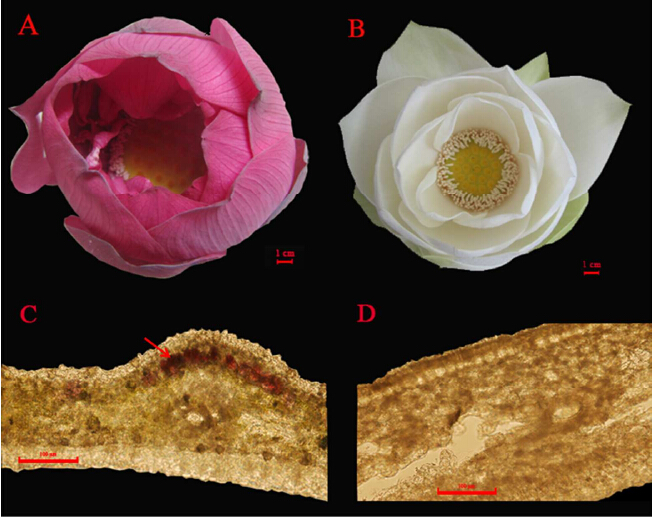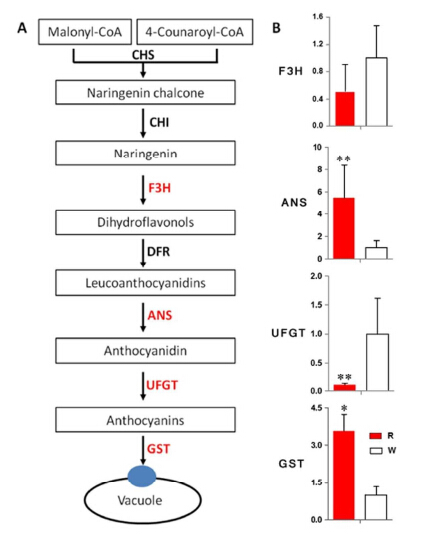Proteomic and Epigenetic Analyses Uncover Flower Coloration Mechanism in Lotus
2015-06-12
Lotus (Nelumbo nucifera), among the top ten famous Chinese traditional flowers, is well known for its prominent beautiful flowers. Flower coloration, affected by three types of pigments (anthocyanin, betalains and carotenoids), has been one of the hotspots in biological studies and appealed interests of many researchers. However, there is hardly any study on lotus flower.
Under the supervision of Prof. YANG Pingfang from Wuhan Botanical Garden, PhD student DENG Jiao conducted gel-based comperative proteomic analysis of petals between red and white lotus cultivars to uncover the flower coloration mechanism.
Pigments analysis of petals of red and white lotus cultivars revealed that the anthocyanins could only be detected in red cultivar. 88 differentially expressed protein spots (36 more-abundant and 52 less- abundant) were successfully identified through the comparative proteomic analysis between these two cultivars. With the Kyoto encyclopedia of genes and genomes (KEGG) pathway analysis, 4 enzymes (flavonoid 3-hydroxylase, anthocyanidin synthase,anthocyanidin 3-O-glucosyltransferase and glutathione S-transferase) were identified to be involved in anthocyanin pathway.
Analysis on the differentially accumulated proteins indicated that anthocyanindin synthase (ANS) gene might be the key factor that controlled the differential biosynthesis and accumulation of anthocyanins in these two lotus cultivars.
Based on the proteomic data, DNA methylation was analyzed on the promoter sequences of ANS gene in both cultivars, revealing different methylation intensity could lead to the varied flower coloration in red and white lotus flowers.
This research enlightens the mechanism of flower coloration, and the further understanding of flower coloration regulation at epigenetic level in lotus.
Results were published in Plant and Cell Physiology entitled “Proteomic and epigenetic analyses of lotus (Nelumbo nucifera) petals between red and white cultivars”.

Images showing the flowers and their transverse sections for two lotus cultivars (Image by DENG Jiao)

(A) KEGG anthocyanin biosynthetic pathway; (B) The relative abundance of these four enzymes in anthocyanin pathway (Image by DENG Jiao)